Mark Sisson's Blog, page 145
April 11, 2018
Midweek Quick Cooking: Olive Oil Packed Tuna and Seared Tomatoes
 If you don’t already keep a few cans of high quality tuna packed in olive oil in your pantry, this recipe is a great reason to start. The meal comes together quickly, with dazzling results. Cherry tomatoes and garlic are seared in a generous amount of olive oil, then comes the tuna and even more olive oil to make a richly flavorful sauce.
If you don’t already keep a few cans of high quality tuna packed in olive oil in your pantry, this recipe is a great reason to start. The meal comes together quickly, with dazzling results. Cherry tomatoes and garlic are seared in a generous amount of olive oil, then comes the tuna and even more olive oil to make a richly flavorful sauce.
The sauce can be tossed with your favorite zoodles (zucchini noodles) or other vegetable-based zoodle varieties, but noodles aren’t necessary to make this meal great. If you don’t want to deal with noodles, just grab a spoon and dig in. The tomatoes and tuna are delicious on their own.
Servings: 3 to 4
Time in the Kitchen: 20 minutes
Ingredients

2 cups cherry tomatoes, halved (12 ounces/350 g)
½ cup extra virgin olive oil (120 ml)
3 garlic cloves, thinly sliced
2 cans tuna packed in olive oil – don’t drain the oil! (about 10 ounces total/284 g)
Optional: Zoodles (or other veggie noodles), shirataki noodles or gluten-free pasta noodles
Instructions

Heat a wide skillet over medium-high heat. Add the olive oil. When the oil is hot and shimmering, add the tomatoes. Be careful—oil will splatter. Cook the tomatoes, untouched, for 3 minutes, then stir once and cook another minute or two until the tomatoes are collapsed and blackened in places. Sprinkle a little sea salt on the tomatoes as they cook.
Turn the heat down to medium. Add garlic. Cook 1 minute more.
Add the tuna in its oil. Break up the tuna with a spoon or spatula. When the tuna is warm, the dish is done.

Optional: Add your favorite vegetable-based “zoodle” or gluten-free noodle to the skillet to soak up all the flavorful oil. Toss well and serve. This dish can be served warm or at room temperature.

The post Midweek Quick Cooking: Olive Oil Packed Tuna and Seared Tomatoes appeared first on Mark's Daily Apple.



April 10, 2018
8 Recommendations: Insights and Trends in Ancestral Health Documentaries
 Most people learn about ancestral health through books and blogs, which makes sense—Primal folks tend to be big readers, and the complexity and depth and constant evolution of the knowledge almost requires the written word for proper transmission. But a well-produced, beautiful film with great content has a unique effect on viewers. The combination of video and audio are more convincing than prose to our lizard brains, making documentaries a great vehicle for the introduction of a radically new idea. Skilled creators in the paleo space have taken note, producing some excellent ancestral health documentaries.
Most people learn about ancestral health through books and blogs, which makes sense—Primal folks tend to be big readers, and the complexity and depth and constant evolution of the knowledge almost requires the written word for proper transmission. But a well-produced, beautiful film with great content has a unique effect on viewers. The combination of video and audio are more convincing than prose to our lizard brains, making documentaries a great vehicle for the introduction of a radically new idea. Skilled creators in the paleo space have taken note, producing some excellent ancestral health documentaries.
Doesn’t hurt that we’re right, of course.
And though “ancestral health documentary” is definitely a sub-genre that’s on the smaller side, trends are emerging. Earlier documentaries were celebrations and explorations of (and introductions to) the relatively young lifestyle, intended for individuals hoping to gain control of their own health. Future documentaries are looking at the bigger picture—how ancestral health can help the entire world and the natural environment get healthier. In today’s post, I’ll go through some of the standouts, explain what they offer, look to some upcoming movies, and track the trends.
Fathead
Pigeonholed by critics as a satirical response to Supersize Me, Fathead begins by disproving the other film’s tendency to infantilize the public and lay the entirety of the blame for the obesity epidemic at the feet of fast food conglomerates. But the real meat of Fathead lies in the second half, when director Tom Naughton skewers the Lipid Hypothesis and low-fat orthodoxy, drawing on interviews with experts like Dr. Mike Eades and running a personal experiment where he loses weight eating nothing but fast food.
Even though it’s not a “paleo” or Primal documentary, it’s a great entry point for beginners to the whole low-carb/high-fat way of eating, especially those skeptical of the scientific underpinnings.
Perfect Human Diet
This was the first explicitly paleo film, and it was groundbreaking. Director CJ Hunt lays out the rationale for the paleo diet, going from archaeological digs to human genome labs to Dr. Loren Cordain using a football field to give one of the better paleo analogies I’ve heard on a football field.
Perfect Human Diet is still the best introduction of these concepts I’ve seen on the big screen.
Cereal Killers
Tim Noakes, the South African professor under constant fire for his heretical views on health and nutrition, guides Donal O’Neill through a month-long low-carb, high-fat, wheat-free, sugar-free, whole foods-based diet to prevent the diabetes and heart disease his genetic history had seemingly ordained for him. I don’t want to give the end away, but the diet doesn’t kill him, doesn’t give him heart disease or diabetes and, in fact, makes him healthier and more resistant to both.
And man, how about that title? “Cereal Killers” is perfect.
The Big Fat Fix
Donal O’Neill’s followup to Cereal Killers enlists the help of Dr. Aseem Malhotra, the British cardiologist who made waves several years ago when he came out against refined carbs and vegetable oils. The two travel to Pioppi, Italy—where Ancel Keys discovered a long-lived, healthy population and created the modern notion of the Mediterranean diet to explain it—and find the good doctor may have misinterpreted or overlooked some factors. It’s much higher in fat, for one. Two, there’s way more to the Mediterranean lifestyle than diet.
In The Big Fat Fix, Malhotra and O’Neill dig deeper than Keys, uncovering and exploring all the hidden secrets of the Mediterranean lifestyle, like community, stress, sleep, sun, movement, and, yes, diet.
We Love Paleo
Millions of people love paleo. To people who follow the lifestyle, the reasons why are obvious. There are many millions more who either haven’t heard of paleo or have some bastardized version of it involving loincloths and luddism in mind. Those are the people who need to hear from people (like me) who love paleo why paleo is so lovable. We Love Paleo (Amazon Prime link, free for members) is precisely that, offering a host of practitioners, chefs, trainers, and other experts explaining why they’re paleo, what it did for them, and what it could do for you.
In the coming months and years, more excellent documentaries will likely come down the pike. I know of at least three upcoming films I’m looking forward to….
Perfect Human Diet 2: Dispelling the Lies
Just about every month, it seems like your vegan friend sends you the trailer to some new screed railing against the evils of meat, saturated fat, and animal agriculture. They’ve got the wind at their backs. They’re winning. Most people take their claims as common sense. “Oh, of course meat’s bad for the environment. Doesn’t a cow fart a ton of methane every day and require 100 pounds of grain to produce a pound of meat or something like that?” They won’t win, though. Not if ancestral documentary pioneer CJ Hunt and his upcoming documentary have anything to say about it.
If you want to help nudge Dispelling the Lies past its funding goal and enjoy the trailer, go here.
We Love Paleo 2
Even more people love paleo this time around, including me. I make a longer appearance in this one. But that’s not the only reason the movie is being made.
Instead of just telling everyone why paleo will make you healthier, happier, and more productive, WLP2 also explains why animal agriculture doesn’t have to destroy the environment and is probably quite crucial for its continued existence.
Bread Head
Max Lugavere, author of the fantastic (and NY Times bestselling) Genius Foods, is producing a documentary on Alzheimer’s prevention called Bread Head. He immersed himself in the topic for the same reason I got involved in ancestral health and fitness way back in the day: to scratch an itch and address a personal need. Lugavere’s itch was his mom developing cognitive symptoms at age 59 despite no family history of the disease. Perplexed and understandably worried about his own future, Lugavere talked to the leading experts in the field and began to uncover a potential solution to the scourge.
Is Alzheimer’s disease a kind of “type 3 diabetes” of the brain? Could the decisions we make as 20-year-olds in the checkout line have ramifications for our cognitive function 30 years down the line? Check out the teaser trailer, donate to the crowdfunding campaign, and find out!
Kale vs. Cow: The Case for Better Meat
Diana Rodgers is a dietician, organic farmer, and now filmmaker whose upcoming Kale vs. Cow: The Case for Better Meat will represent a huge salvo against the misguided and frankly wrong idea that animal agriculture cannot coexist with a healthy environment. Not only is environmentally-friendly animal agriculture possible to achieve, this movie will argue that we can’t have a healthy environment at all without animals—especially the most vilified ones of all, cattle—in our food system. They’re actually necessary. You just have to do it right.
If you can, watch the trailer and donate a few bucks to help them reach their funding goal.
Are you noticing a trend?
Earlier documentaries were personal and prescriptive, offering a set of dietary guidelines that upended what many people thought was the right way to eat, train, and live. And it worked—paleo has captured the hearts, minds, mouths, and digestive tracts of millions. But many remain resistant, either swayed by the authoritative power of conventional wisdom about the health and environmental effects of animal foods, or unwilling to give that weird fad diet a try. The opposition isn’t letting up, either, releasing cinematic diatribe after cinematic diatribe that only buttress the conventional stance.
These upcoming documentaries are taking the fight to the opposition. They’re facing down the big challenges, the major criticisms and claims that, if taken to their logical conclusion, threaten our access to healthy animal foods. Nothing is more important than that.
Did I miss any? What are your favorite paleo/Primal/ancestral-friendly documentaries?
Thanks for reading, everyone. Take care and be well!
Want to make fat loss easier?
Try the Definitive Guide for Troubleshooting Weight Loss for free here.
The post 8 Recommendations: Insights and Trends in Ancestral Health Documentaries appeared first on Mark's Daily Apple.



April 9, 2018
Dear Mark: Power Yoga, Pelvic Floor, Keto Reset and Osteoporosis
 For today’s edition of Dear Mark, I’m answering three questions. First, is power yoga—a more “intense” version of yoga that includes strength exercises—a suitable alternative to strength training for aging women? Probably not, but that doesn’t make it bad or wrong to do. Second, what’s the deal with pelvic floor dysfunction after menopause? What’s the best way to improve that situation? And third, is the Keto Reset right for older women with osteoporosis?
For today’s edition of Dear Mark, I’m answering three questions. First, is power yoga—a more “intense” version of yoga that includes strength exercises—a suitable alternative to strength training for aging women? Probably not, but that doesn’t make it bad or wrong to do. Second, what’s the deal with pelvic floor dysfunction after menopause? What’s the best way to improve that situation? And third, is the Keto Reset right for older women with osteoporosis?
Let’s find out:
Shannon asked:
Would you consider power yoga “lifting heavy things”? I do power yoga 2-3 times a week and it involves a lot of standing strength and arm/hand stands? Thanks and I love everything on Marks Daily Apple!
Not quite. Nothing can really compete with strength training and high-intensity work for building bone resilience and strength. Your bones need impact and intensity, and yoga generally doesn’t supply enough of it.
That’s why hopping in place can help strengthen hip and thigh bones in older folks. The jarring impact of landing—even from a modest height of six or eight inches—triggers bone resorption and remodeling in the legs.
That’s why lifting heavy things makes bones strong. The bone acts (along with the muscle) as a lever during the lift, which places a lot of stress on the bone. To recover from the activity and be ready for the next time it has to fulfill lever duty, the bone remodels itself, gaining density and getting stronger and more durable.
Power yoga is closely related to ashtanga yoga, long considered a more “intense” form of yoga. Yet an 8-month study found that Ashtanga yoga yielded only mild benefits to bone health. As for strength, another 8-month Ashtanga study by the same group found that it improved leg press strength but little else. It’s better than nothing, but it’s probably not enough to stave off the worst effects aging has on muscle and bone.
Still, if yoga is something you love, continue doing it. Yoga will improve your balance, coordination, flexibility, and even strength under certain contexts. Throwing in a single day or two of dedicated strength training on top of the yoga is a great way to have it all. One day a week is “enough,” two days a week is better (a recent study found that while older women training one day a week maintained strength, training twice a week was necessary to gain ever-critical lean muscle mass).
Power yoga varies a lot from place to place, so it really depends on how your instructor chooses to implement it. I just wouldn’t bank on it providing enough stimulus for your muscles and bones.
Michelle Reese wrote:
I’d like to know a little about how to strengthen and support the pelvic floor, which really gets compromised after menopause, making it hard to do the squats. I’ve really noticed the decline in function after menopause, even though I’ve been working out consistently my entire life. Thanks for doing the research and sharing today’s wisdom!
My pleasure. Thanks for reading!
Realize that the pelvic floor is a system of muscles, and muscles need to be used and loaded, lest they degenerate—which only speeds up as we age. The same thing applies to the rest of your muscle. It’s just that actively using the pelvic floor muscles is harder and less intuitive than actively engaging your biceps or hamstrings. They’re also hidden, so it’s easy to forget they even exist and need our attention.
For pelvic floor stuff, go with Katy Bowman. Check out her articles and books on the subject. Her expertise is unmatched.
Vicki M asked:
No doubt this has been discussed before…..however, for a 60 year old post menopause woman with osteoporosis (but still active, going to gym, walking etc), is Keto reset a good option?
The bad news is that this particular diet has never been studied in this particular population.
The good news is that, as a human, your species has been well-represented in the ketogenic diet literature.
In a long-term 5 year study of human adults, ketogenic dieting failed to produce any negative effects on bone health.
In a shorter study, a low-carb, high-fat diet (no word if it was “ketogenic” or not) failed to worsen bone turnover markers.
Some critics claim that ketogenic diets (and pretty much any diet that includes “evil” animal protein) “dissolve” bones by throwing off the acid/base balance, such that the body must break down bone to ameliorate the acid load. It’s not true, but if it were? In a recent study, elite female race-walkers on a ketogenic diet saw no change in their acid/base balance.
There are more wrinkles to the keto/bone health story, which I’ll explore in the near future. Stay tuned for that.
But long story short, keto reset is fine, provided you don’t just go keto and do nothing else. You still have to train (including strength training), get plenty of sleep, get vitamin D, and focus on the micronutrient content (including the bone-relevant potassium, calcium, magnesium) of your diet and not just the macronutrients.
That’s it for today, folks. Thanks for reading, writing, and commenting. Include any further questions or input you have down below and have an incredible day!
The post Dear Mark: Power Yoga, Pelvic Floor, Keto Reset and Osteoporosis appeared first on Mark's Daily Apple.



April 8, 2018
Weekend Link Love — Edition 498
 Research of the Week
Research of the WeekTwo years of 15% calorie restriction slowed metabolism and reduced oxidative stress in older adults.
Food allergy linked to nature and nurture.
Creating art—even if you aren’t great at it—lowers stress.
Chronic nicotinamide riboside supplementation increases NAD+ (an important anti-aging marker) while being well-tolerated.
Mindfulness meditation lowers blood pressure via gene expression (if you do it).
A five-day break from Facebook reduces stress but also life satisfaction. I think they’re just doing the whole “life satisfaction” thing wrong.
How some early life factors associate with resting heart rate later in life.
New Primal Blueprint Podcasts
 Episode 233: Arriane Alexander: Host Elle Russ chats with Arriane Alexander about the potential benefits of putting yourself out there in video form on social media.
Episode 233: Arriane Alexander: Host Elle Russ chats with Arriane Alexander about the potential benefits of putting yourself out there in video form on social media.
Each week, select Mark’s Daily Apple blog posts are prepared as Primal Blueprint Podcasts. Need to catch up on reading, but don’t have the time? Prefer to listen to articles while on the go? Check out the new blog post podcasts below, and subscribe to the Primal Blueprint Podcast here so you never miss an episode.
Interesting Blog Posts
One guy’s experience with extreme endurance training on ultra-low-carb.
When a 100 year-old running champion offers training advice, you listen.
Media, Schmedia
How some companies are making their office environments more paleo friendly.
Medication-resistant gonorrhea has arrived.
How brain scarring (from concussive blasts) may be causing PTSD in vets.
Everything Else
Let’s just hope these orangutans don’t discover opium poppies.
Human dietary evolution in central Germany.
Don’t develop subclinical magnesium deficiency, folks.
Things I’m Up to and Interested In
Podcast I found interesting: “This is Your Brain on Sex” via the On Being Podcast.
I knew I loved blueberries for a reason: Polyphenols target sirtuin 6, an important anti-aging pathway, with the anthocyanidins found in blueberries and purple potatoes being the most potent.
An older article I enjoyed: “From Diabetes to Athlete’s Foot, Our Bodies are Maladapted to Modern Life”
Story I found interesting: How the Indians came to be.
I’m not surprised: There may be a link between antibiotic and acid-suppressive usage during infancy and later allergies.
Recipe Corner
Sometimes you just need a hamburger salad.
Keto French onion soup.
Time Capsule
One year ago (Apr 1– Apr 7)
How to Augment and Support Your Natural Detox Capacities – “Detox” as commonly practiced is usually nonsense, but there’s a lot you can do.
9 Trends of Primal Interest – What’s trending?
Comment of the Week
“If I tell people that I toss my kids holiday candy, it’s seen as some kind of affront to the American tradition. I get the “All things in moderation” lecture. Then I feel guilty for not participating and then run out to find more natural substitutes for all the junk that gets thrown at them, which leads to paleo pancakes, muffins, dark chocolate Easter bunnies and other slippery slope foods that are filled with starches and a month worth of nuts.”
– Jennifer L., I remember those days well. Both the kids, I’m happy to say, turned out just fine, despite going without all those chocolate folkloric icons.

The post Weekend Link Love — Edition 498 appeared first on Mark's Daily Apple.



April 7, 2018
Sheet Pan Steak Fajitas
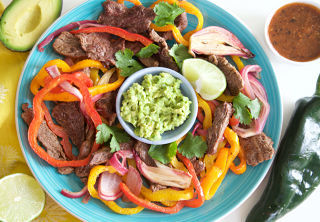 The whole point of sheet pan meals is to make life easier by delivering a flavorful, balanced meal to your table with very little cooking and cleanup involved. These sheet pan steak fajitas deliver on all counts. Strips of steak, bell pepper and onions served with avocado and salsa is a delicious mix of protein, colorful vegetables and healthy fat. Everything cooks together at the same time. After dinner, a cutting board, one bowl and two sheet pans are the only cleanup you’ll be stuck with.
The whole point of sheet pan meals is to make life easier by delivering a flavorful, balanced meal to your table with very little cooking and cleanup involved. These sheet pan steak fajitas deliver on all counts. Strips of steak, bell pepper and onions served with avocado and salsa is a delicious mix of protein, colorful vegetables and healthy fat. Everything cooks together at the same time. After dinner, a cutting board, one bowl and two sheet pans are the only cleanup you’ll be stuck with.
The only “cooking” required is slicing the meat and veggies, but even this step can be made easier by asking your butcher to slice the meat for you. Fajita meat and peppers cooked in the oven don’t have the blackened edges that regular fajitas do, but sheet pan fajitas are still really, really good. Cooking this whole meal in the oven so that you can step out of the kitchen gives you twenty-minutes of precious time to relax, or say hello to your spouse, or play with your kids. This meal is a win for everyone!
Servings: 4
Time in the Kitchen: 20 minutes, plus 20 minutes to cook
Ingredients

1 pound flank steak, cut into ½-inch slices*
Juice of 1 lime
1/3 cup avocado oil
2 teaspoons chili powder
1 teaspoon cumin
1 teaspoon garlic powder
1 teaspoon kosher salt
4 bell peppers, thinly sliced
1 red onion, thinly sliced
Sides: Guacamole or sliced avocado, salsa, sour cream, cilantro
Instructions
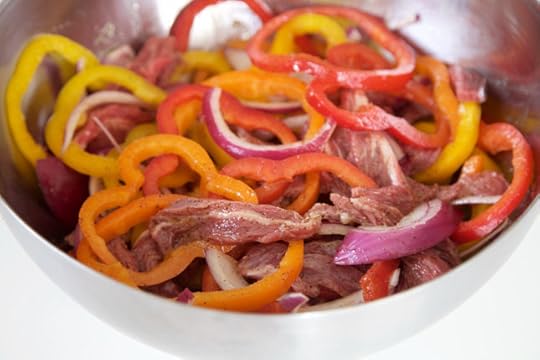
*Chilling raw steak in the freezer for 10 minutes makes it easier to slice. Tip: Put the steak in the freezer while slicing the bell peppers and onions.
Preheat oven to 425 ºF.
For easier cleanup, cover two rimmed sheet pans with foil.
In a large bowl, whisk together lime juice, avocado oil, chili powder, cumin, garlic powder and salt.
Add the steak, peppers and onion to the bowl. Toss really well with your hands to evenly coat the meat and vegetables with the spice mixture.
Spread the steak and veggies out evenly in one layer on the sheet pans.
Roast 12 to 15 minutes, until meat is done.
For easiest cleanup, serve the fajitas right on the sheet pan! Sides include avocado, salsa, sour cream and cilantro. Primal tortillas are optional.
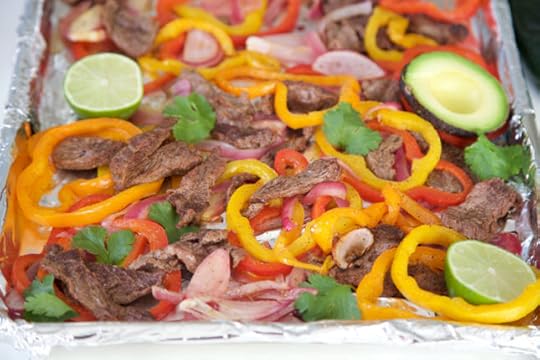
Want more Primal recipes?
Try the Primal Blueprint Slow Cooker Cookbook for free here.
The post Sheet Pan Steak Fajitas appeared first on Mark's Daily Apple.



April 6, 2018
Gaining the Clarity of Body and Mind Helps Gain the Clarity of Soul — And a Giveaway
It’s Friday, everyone! And that means another Primal Blueprint Real Life Story from a Mark’s Daily Apple reader. If you have your own success story and would like to share it with me and the Mark’s Daily Apple community please contact me here. I’ll continue to publish these each Friday as long as they keep coming in. Thank you for reading!

To say our lives have been impacted by the Primal Blueprint and Mark Sisson would be a ridiculous understatement. The fact of the matter is, our lives are a direct creation from the influence that Primal Blueprint has had on our lives. We are Adam and Vanessa Lambert, creators of Bee The Wellness, an innovative personal coaching company based out of Los Angeles. This is our story.
We have all read the stories of success with weight loss and improvements to health and longevity here on Mark’s Daily Apple. What we don’t often get to hear is how the magic of this community and way of living can make a profound impact on the rest of your life. That is what the The Primal Blueprint has done for us, and we know it can do it for you too.
We were already paleo when we found Mark’s Daily Apple years ago. We had been living in the same small town and being coached by Robb Wolf and had already adopted the ancestral diet when we were first introduced to Mark Sisson. What we didn’t know was how connecting to the Primal Blueprint community would shift how we would fundamentally live our lives and who we would become in the world. This is the part about this lifestyle that is hard to describe and even more difficult to point to. Alas, we will give it a go.
Adopting the Primal eating principles creates space in your life. What we mean by that is now that you are not subject to dealing with how the standard American diet leaves you feeling (tired, bloated, and hungry five minutes later) you have space to create your life in the way you want to experience it, not in the way it happens to you by default.
Now we know it may seem like a stretch, but gaining the clarity of body and mind, helps you to gain the clarity of soul. Suddenly you start to take notice of the other things in your life that are not in alignment with your healthiest self. Perhaps it’s other lifestyle habits, relationships, or your work environment. Whatever it is, you start to notice a distinct disconnect between how you have been living your life and how you want to live your life. By gaining this foundation of health you suddenly find it propelling you towards other ways of thinking, acting, and creating your reality more mindfully and with greater intention. Connecting to other Primal subscribers within the community only deepens your commitment to this new way of being.
This is what happened for us. Eating an ancestral diet, following the Primal principles, connecting with like minded people in this community was a catapult for discovering what was important to us. From there we discovered who we wanted to be in the world and how we could make an impact in the community in our unique way. This led us to creating our own wellness company where we now get to coach people from all walks of life and in all areas of the world. We also lead Primal based adventures in places like Costa Rica, Peru, Africa and this summer, the Redwood Forest of Northern California. We host a paleo based podcast where we share and communicate with people who can help influence the world in a more positive way.
Recently we were nominated for four “Best Of Paleo” awards, which helped us to realize we were in fact making a difference in people’s lives. We are living our dream life and it all started by embracing the Primal way of living and being in the world. So for those of you who are just beginning your journey or for those of you who are well on your way, let this be a reminder of the limitless potential that comes from adopting this way of being in the world. Embrace the journey and be open to what it can create for you in your life, because when it comes to Primal living, the sky is the limit.

For more information on Adam and Vanessa Lambert, visit www.beethewellness.com and be sure to check out their paleo retreat with a festival vibe “Bee – Fest” happening in July of 2018. It’s an event you won’t want to miss! You can also check out their Bee The Wellness podcast, which I named one of my top picks for 2018.
The Giveaway
We’re teaming up with Adam and Vanessa to offer a Primal-worthy giveaway on Instagram, where you can win $100 Gift Card to PrimalKitchen.com + access to an ENTIRE YEAR of Adam & Vanessa’s UnveilYourWellness & Meditation programs—organized around the four seasons and split into twelve 21-day challenges. (Total Value: $2000+) For more info and to enter, head over to Primal Kitchen® Instagram. Happy Friday, everyone!


The post Gaining the Clarity of Body and Mind Helps Gain the Clarity of Soul — And a Giveaway appeared first on Mark's Daily Apple.



April 5, 2018
Primal Recipes On a Budget
 It’s true that eating well is perhaps the best investment you’ll make—in life and health. That said, there’s no reason to believe that going Primal means breaking the bank. Looking for delicious Primal recipes that make it possible to eat well within your means?Who among us isn’t? These budget-friendly Primal recipes put a satisfying meal on the table without the enormous grocery bill.
It’s true that eating well is perhaps the best investment you’ll make—in life and health. That said, there’s no reason to believe that going Primal means breaking the bank. Looking for delicious Primal recipes that make it possible to eat well within your means?Who among us isn’t? These budget-friendly Primal recipes put a satisfying meal on the table without the enormous grocery bill.
Buy Meat on Sale
Printing out recipes and meal planning is a great idea, but if you stick strictly to your shopping list at the meat counter, you’ll usually pay more. Instead, try building your meals around meat that’s on sale.
An easy way to meal plan and take advantage of sales is to buy sale meat and freeze it. The next week, when you’re making a grocery list, check your freezer first and plan meals around the meat you’ve already bought.
Ground meat is often on sale, so stock up the freezer and keep these recipes handy:

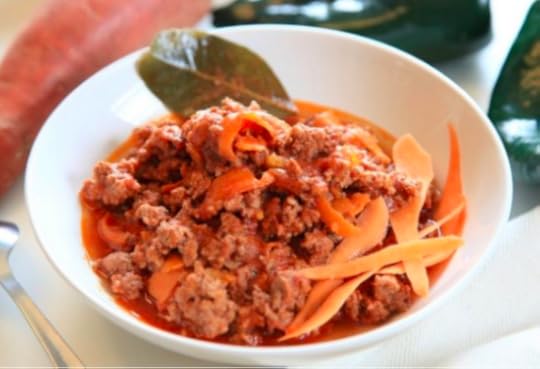
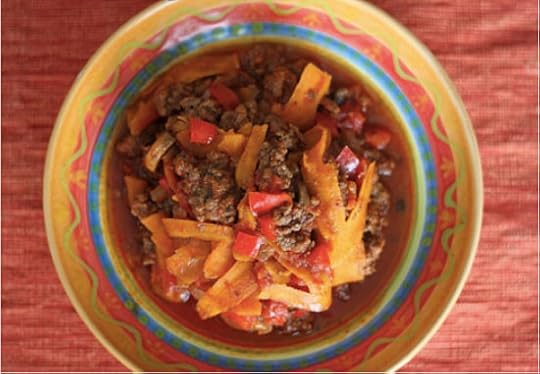

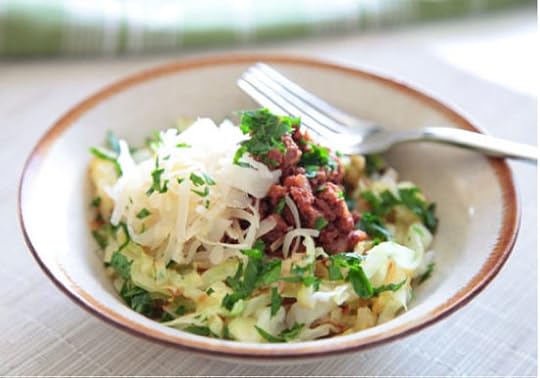


Buy Larger, Less Expensive Cuts of Meat
Pork shoulder and chuck roast are good examples of less-expensive cuts of meat that can feed a large family or provide several meals for a smaller one. If you’re single, then freeze individual portions of the cooked meat for easy lunches and dinners.


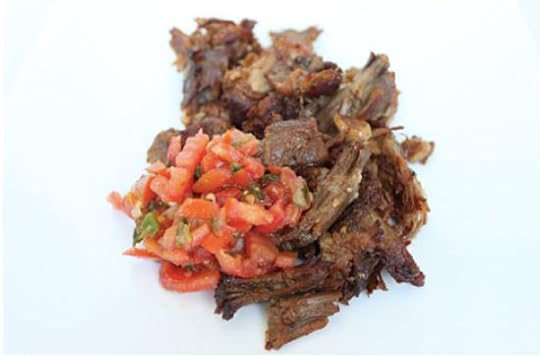

Learn to Love Liver
Liver is nutrient dense, filling, and inexpensive. This healthy and inexpensive protein doesn’t have to be a main course, it can also be served as an appetizer or side dish.

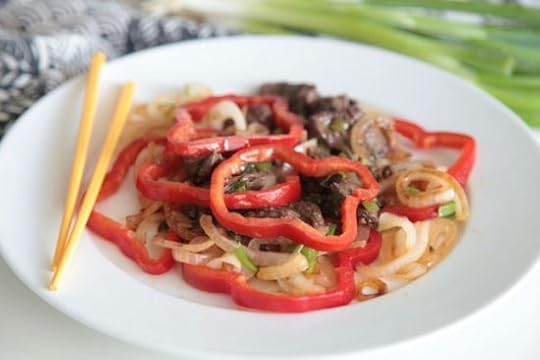

Meatless Mondays
Work more veggies into your diet, and save a little money while you’re at it, by skipping meat once a week. For protein, throw a couple fried eggs on a salad or make a frittata as the main course.


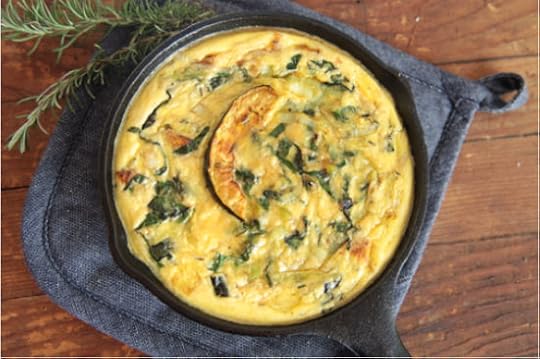


Soup
A big pot of soup is both nourishing and a great way to use up random odds and ends in the refrigerator. Chicken stock simmered with chopped vegetables from the back of the fridge (or a bag of frozen veggies) plus bits of leftover meat makes a surprisingly good meal. Or, start from scratch with any of these delicious soup recipes.



The post Primal Recipes On a Budget appeared first on Mark's Daily Apple.



April 4, 2018
What Happens “After Keto”?
 Google searches for this question have shot up in recent weeks. I’m not surprised. An unprecedented number of people went keto in January purely as a quick weight loss hack, and now they’re looking to transition off of “this weird diet.” Tortillas and bagels beckon, after all. This is the wrong way to approach keto—obviously. It’s not a quick hack. It isn’t magic, and if it were magic, the magic takes awhile to happen.
Google searches for this question have shot up in recent weeks. I’m not surprised. An unprecedented number of people went keto in January purely as a quick weight loss hack, and now they’re looking to transition off of “this weird diet.” Tortillas and bagels beckon, after all. This is the wrong way to approach keto—obviously. It’s not a quick hack. It isn’t magic, and if it were magic, the magic takes awhile to happen.
And asking “what happens after keto?” is the wrong question to ask. And here’s my answer to all those folks who are wondering.
Keto is a reset (a Keto Reset, even). It’s a return to the ancestral metabolic state, the metabolic state we were born into (newborns are filthy with ketones, even on their relatively sweet mother’s milk diet). Keto happens really easily in humans compared to other animals. You go 12 hours without eating and then wake up in the morning? You’ll have detectable ketones on your breath. It’s almost like we’re made for it.
Then we enter the “real world.” We start sitting in chairs for half the day. We never go more than a couple hours without snacking on something. We eat carbs we don’t need in order to fuel athletic pursuits we don’t actually pursue. We eat right up until bedtime, which is later than ever because we have multiple social media statuses to update. After our 6 hours of sleep, we grab a pastry and Frappucino on the way to work or school. We’re not just well-fed. We exist in a permanent fed state. Since ketosis naturally occurs when we don’t eat, ketosis comes fewer and farther between for the majority of people living and eating this way.
When you fully commit to the ketogenic diet, you’re committing to rebuild your fat-burning metabolic machinery. The stuff you were born with but squandered. The stuff that’d fuel you for ten hours straight without any exogenous input on those long summer break days. It’s pretty enviable metabolic machinery to have. And while it takes at least four weeks and maybe as long as several months to really establish a solid fat-burning infrastructure, once you build it, you have more flexibility.
This is where “after keto” comes in.
You can stay keto indefinitely. This could be necessary for certain people with certain conditions that really respond to keto, like epilepsy or neurodegenerative diseases. Or if keto just works for you, it might be the easiest, most sustainable way forward. Studies as long as five years show no negative side effects of long-term ketogenic dieting, so, provided you do it right (no salami and cream cheese keto diets), I see no reason not to continue.
If you’re done losing weight and happy with your body comp, you can shift toward a more moderate carb intake. Maybe 100-150 grams a day, depending on activity levels. Just be sure to reduce your fat intake commensurately. The weight loss will have cleared out most of the insulin resistance that naturally results from carrying extra body fat and improve your ability to handle a few more carbs.
If you have weight to lose, and keto was working, I’d just stick with it. Stay the course until you’re where you like.
If you have weight to lose, and keto wasn’t working—and you gave it an honest 2-3 month try—try something else. Nothing works for everyone. Some people just do better on moderate carb, lower fat diets. Most people eating these diets for weight loss probably shouldn’t be and would do better on a keto approach, but this is a viable option if you’ve tried keto and it just hasn’t worked.
What you definitely don’t want to do is return to the dietary habits that led you to keto. Yet I see people do this, time and time again: Keto went well, but they want out, so they start adding carbs on top of their high-fat intake. That’s a recipe for disaster. Not only will you consume an incredible number of calories without even knowing it—butter just disappears into a baked potato—you’ll be consuming the most obesogenic combination of macronutrients around. Consider what the Standard American Diet consists of:
Salty snacks like chips and crackers (pulverized carbs fried in refined seed oils)
Sweet baked goods (fructose inside pulverized carbs baked in refined seed oils)
Fast food meals (meager meat sandwiched between pulverized carbs served with pulverized carbs fried in refined seed oils)
Pizza (huge discs of pulverized carbs topped with cheese)
Notice a theme? Sound familiar?
Not even choosing the cleanest, most Primal sources of fats and carbs together makes it much better. That combo doesn’t work unless you erect an ultra-intense, high-volume training habit just to keep the junk at bay—and even then, you’ll only maybe stave off some of the weight gain and create a whole host of other problems. If you’re getting paid to do it, sure. But if you’re a weekend warrior destroying his or her social life just to out-train a bad diet, what’s the point?
Here’s what I like most—and what seems to work best for folks: the keto zone.
That’s where your diet is fluid. You’re regularly slipping in and out of ketosis. You’re a bit higher (not high) carb one day to help with an intense training session and go right back to lower carb the next. And throughout it all, because you’ve put in the work necessary to build up that fat-burning machinery, you’re always great at burning fat, and you retain your ability to burn glucose/glycogen when needed.
It’s actually not that far off from how I ate before the keto reset. Same basic foods promoted and eliminated. Similar macronutrient ratios. But with my newfound metabolic flexibility and the improvements in mitochondrial function, it feels different. I eat a little less. I’m a little more efficient with my calories. And I’m not getting any of the negative effects usually seen in diehard adherents to calorie restriction. I’m still killing it in the gym, on the board, and on the Ultimate field. I’m sleeping great. My cortisol levels are in a good place because my body isn’t perceiving this way of eating as a stressor. I’m handling the work load of a growing business and the stress of a cross-country move without issues.
If I had to sum up what ideally happens “after keto,” it’s that ketosis becomes a well-worn tool in your kit—one you’re able to call upon when the job requires it. These jobs just… happen. You realize you skipped lunch because you just weren’t hungry, and you barely noticed. You spend all day bouncing around airports and never even think to eat the terrible food being offered, and it’s no issue at all. It doesn’t even register because, underneath the hood, your mitochondria are dialed in and producing all the energy you need from your own body fat. Ultimately, what keto allows you to do is stop thinking about food so much and get on with your life.
That’s what I’ve seen, at least in myself, my tribe, and the thousands of people who write in to tell me about it. That’s our “after keto.”
What’s yours?
Thanks for reading, everyone. Take care, be well.
The post What Happens “After Keto”? appeared first on Mark's Daily Apple.



Midweek Quick Cooking: Earl Gray Keto Latte
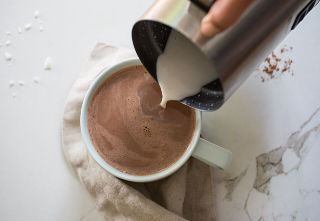 If you joined us when the good folks at Pique Tea dropped by to share Saturday’s luscious (and I don’t use that word very often) Keto Earl Grey Collagen Fat Bomb recipe, I think you’ll appreciate this goodie. With all the benefits of Primal Kitchen® Collagen Fuel™ and the antioxidant power of Pique Tea’s Tea Crystals, this is a great choice to add to your keto routine—any time of day.
If you joined us when the good folks at Pique Tea dropped by to share Saturday’s luscious (and I don’t use that word very often) Keto Earl Grey Collagen Fat Bomb recipe, I think you’ll appreciate this goodie. With all the benefits of Primal Kitchen® Collagen Fuel™ and the antioxidant power of Pique Tea’s Tea Crystals, this is a great choice to add to your keto routine—any time of day.
Time in Kitchen: 5 minutes
Ingredients:

1 sachet Earl Grey Tea Crystals
8oz water
½ tablespoon of coconut butter or ½ tsp of grassfed ghee butter
½ cup macadamia nut milk
1 Chocolate Coconut Collagen Fuel™ Packet
2-4 drops alcohol-free stevia (optional)
Instructions:

Mix 1 sachet of Pique Tea Earl Grey Tea Crystals with 1 Primal Kitchen Chocolate Collagen Fuel packet in a cup. Add 8oz of hot (not boiling) water. Mix until it dissolves completely.
Combine ½ tablespoon ghee or coconut butter with ½ cup macadamia nut milk and froth by whisking with a frother or blending until smooth.
Transfer to Earl Grey Tea cup and enjoy!

Pique Tea is the world’s first Cold Brew Tea Crystals. Pique delivers up to 12x the polyphenols of other teas on the market and is most effective for unlocking benefits like improved gut health, sustained energy, and stress reduction. Pique is also the only tea that Triple Screens for heavy metals, pesticides and toxic mold commonly found in tea. Best of all, Pique is cold or hot water soluble and delivers a world championship brew (3 Gold Medals at 2018 Global Tea Championships). Potency, Purity, and Ease-of-Use is the holy trinity for unlocking the benefits of tea and Pique is the tea for health benefits.
The post Midweek Quick Cooking: Earl Gray Keto Latte appeared first on Mark's Daily Apple.



April 3, 2018
Women’s Fitness: Should It Change with Age?
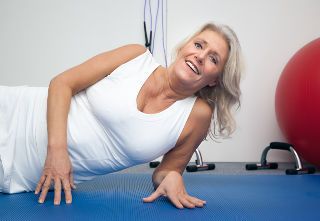 Generally speaking, the basic Primal Blueprint for fitness and physical activity applies equally to men and women of all ages. Lifting heavy things works in everyone. Sprinting is a fantastic way—for anyone who’s able—to compress workouts and improve training efficiency. Improving one’s aerobic capacity through easy cardio doesn’t discriminate between the sexes. And everyone should walk, hike, garden, and perform as much low level physical activity as possible. These basic foundations—the 30,000 foot view of fitness—don’t really change across age or sex.
Generally speaking, the basic Primal Blueprint for fitness and physical activity applies equally to men and women of all ages. Lifting heavy things works in everyone. Sprinting is a fantastic way—for anyone who’s able—to compress workouts and improve training efficiency. Improving one’s aerobic capacity through easy cardio doesn’t discriminate between the sexes. And everyone should walk, hike, garden, and perform as much low level physical activity as possible. These basic foundations—the 30,000 foot view of fitness—don’t really change across age or sex.
But the details do, especially for women.
You see, women are in a unique position. As men age, the hormonal environment degenerates. They still make the same basic hormones in the same proportions, only the absolute numbers decline. As women age, the hormonal environment shifts dramatically. The menopausal ovaries no longer produce enough follicle-stimulating hormone (FSH) and luteinizing hormone (LH) to regulate estrogen, testosterone, and progesterone, causing the latter hormones to fluctuate in novel ways.
What kind of hormonal changes and physiological developments occur in the aging woman that might affect how best to train?
Atrophied muscle and reduced strength. As estrogen drops, so does muscle function.
More of a “male” body fat distribution. Postmenopausal women tend to gain more belly fat.
Reduced bone mass. The menopausal hormonal environment leads to a reduction in vitamin D synthesis and absorption, lower calcium levels, and reduced bone mass.
Vascular changes. After menopause, arteries become stiffer. Hypertension becomes more likely.
Exercise intolerance. This one’s a real bummer. You know you need to exercise more than ever to stave off some of the side effects of aging, but your aging hormonal environment is making exercise harder to tolerate.
What takeaways are there? How can you counter or mitigate some of these effects?
Exercise Can Improve Body Comp
Exercise becomes more effective at improving body composition after menopause than before. This may be a “benefit” of the more male body fat distribution patterns. After all, men’s body comp tends to respond more quickly to training than women’s.
Get Started Right Away
If you don’t have much experience with exercise, do it immediately. Don’t wait for the negative effects to accrue. Even if you’ve lived a charmed life where not exercising didn’t really impact your ability to function, that could very well change. The earlier into menopause you start training, the better. The negative changes to exercise tolerance, bone density, and muscle function take awhile to develop, and during the early post-menopause period, your ability to train and reap the benefits of that training is pretty similar to your pre-menopause ability.
Just Do Something
The perimenopausal and early menopausal years can be rough going for many women. You just feel off. You’re not sleeping well. Things are, well, different, and you don’t necessarily have a lot of support to make sense of it or adjust to it. Even though research shows that a minimal amount of exercise can have a big effect on weight gain and disease risk after menopause, sleeplessness or fatigue might be telling you not to do it. Well, that’s not going to cut it. Overcome that. There’s no easy way to say this. No tricks. Just make the decision to exercise, do so regularly for at least a couple weeks, and your exercise tolerance will go up, physical activity will be intrinsically rewarding, and everything will start to improve.
Make Sure You Eat Enough Meat, Dairy, and Other Animal Foods
Protein utilization efficiency drops the older you get, so the older you are the more protein you need to get the job done. Even studies that purport to show negative effects from meat consumption find that older adults benefit from increasing meat. Total protein and dairy protein intake also predict muscle mass and bone mass in postmenopausal women. And meat isn’t just about the protein. It’s also about the micronutrients, like iron, copper (found in organ meats), zinc (high in red meat), carnitine (high in red meat), and phosphatidylserine (high in egg yolks, present in Primal Calm)—all of which have been found to improve women’s physical performance when packaged in a convenient supplement.
Go Into Middle Age As Fit As Possible
Good fitness—aerobic capacity, muscle mass, physical strength, mobility—is a reserve against aging-related degeneration. The fitter you are when menopause hits, the more manageable the transition and the slower that degeneration will be over the subsequent decades.
Intensity Is Important
If anything, it’s more critical for the older woman to push the intensity than anyone else. She often has the most to lose in muscle mass and bone strength. Again and again, across study after study in menopausal women, “low-intensity” doesn’t work as well as higher-intensity training. It still works, mind you. But the greater intensity stuff gives extra benefits.
For instance, in a study comparing a low-intensity aerobic/resistance program to a higher-intensity aerobic/resistance program, both improved muscle strength and walking ability, but only the higher-intensity program improved dynamic balance—a major risk factor for falls.
Intensity Is Relative
By “high-intensity,” I’m not suggesting that a 62 year-old woman do high-rep bodyweight front squats or try to do a double bodyweight deadlift (unless she knows what she’s doing), just that she push the envelope ever so slightly. If your inclination is to do rows with 20 pound dumbbells, consider 25 pounders. If air squats are easy, try them with a weight vest. Sprinting doesn’t have to take place on a track; it can happen in a pool, on a tough hike, or on the bike. Things should be tough but doable.
Volume Should Be Moderate
Exercise has a way of brute forcing glucose tolerance by increasing insulin sensitivity and glucose uptake by muscles, so you’ll be better off than the women who don’t exercise at all, but there’s still a limit because menopause tends to inhibit carbohydrate metabolism and glucose tolerance. High volumes of training, especially if you’re heeding the previous advice to increase the intensity, demand a level of carbohydrate intake that your body probably isn’t prepared to handle.
Lift Heavy Things Twice a Week
You could do more, but I don’t think it’s necessary. Lifting (relatively) heavy weights provides the necessary stimulus to maintain bone density and muscle strength. Movements that engage the whole body, like deadlifts and farmer carries, will be most effective and efficient. These exercises replicate real world movements, like picking up grandkids or carrying grocery bags, that you need to perform. If you’re uncomfortable with these movements, find a good trainer.
Walk a Ton
Walking is magic for everyone, but especially post-menopausal women, for whom a three-day-a-week walking habit improves resistance to heart failure. Join a walking group. Better yet, start one in your circle of friends. Be the example, the leader. No one else will. And set a brisk pace when you do walk. The brisker, the better.
Always Choose the Stairs
Stair climbing itself is a great form of exercise for post-menopausal women, improving leg strength and endothelial function. As a mindset, “taking the stairs” is even more valuable. It’s doing the hard thing. It’s parking in the far lot and walking a quarter mile. It’s carrying your own bags. It’s a mindset to embody: “I’m strong enough, capable enough, and tough enough to take the stairs while people half my age use the elevator to go one floor.”
Compare Yourself To Who You Were Two Weeks Ago, Not the 20-Year-Olds At the Gym
The trend is everything. If you’re getting better, that’s what matters. You are not other people. We all have different situations, capacities, genetic histories, and hormonal profiles. Focus on beating your former self, even if only by a couple pounds lifted or seconds shaved from a sprint time—and nothing else.
Look Into Hormone Replacement Therapy
Since estrogen plays such a key role in women’s physiological function, many studies find exercise to be more beneficial in postmenopausal women who take HRT than in postmenopausal women who do not. It’s a highly personal choice, but I’ll have more on this topic in the future.
Aging women aren’t a different species. Menopause doesn’t really change how you should train in a fundamental way. There aren’t any magical menopause-specific exercises. It just makes certain types of training—and exercise in general—that much more important for health and overall function. You could “get away” with not training much before (not really, but you can fool yourself). Now you can’t. Now you have to exercise and move on a regular basis if you want to maintain functional capacity, take care of yourself, and stick around to enjoy your loved ones.
Thanks for reading, everyone. Take care, and I’d love to hear from any people out there with direct or indirect experience with menopause. How did your training change? How did you change?
As always, direct any questions down below.
Want to make fat loss easier?
Try the Definitive Guide for Troubleshooting Weight Loss for free here.
The post Women’s Fitness: Should It Change with Age? appeared first on Mark's Daily Apple.



Mark Sisson's Blog
- Mark Sisson's profile
- 199 followers







